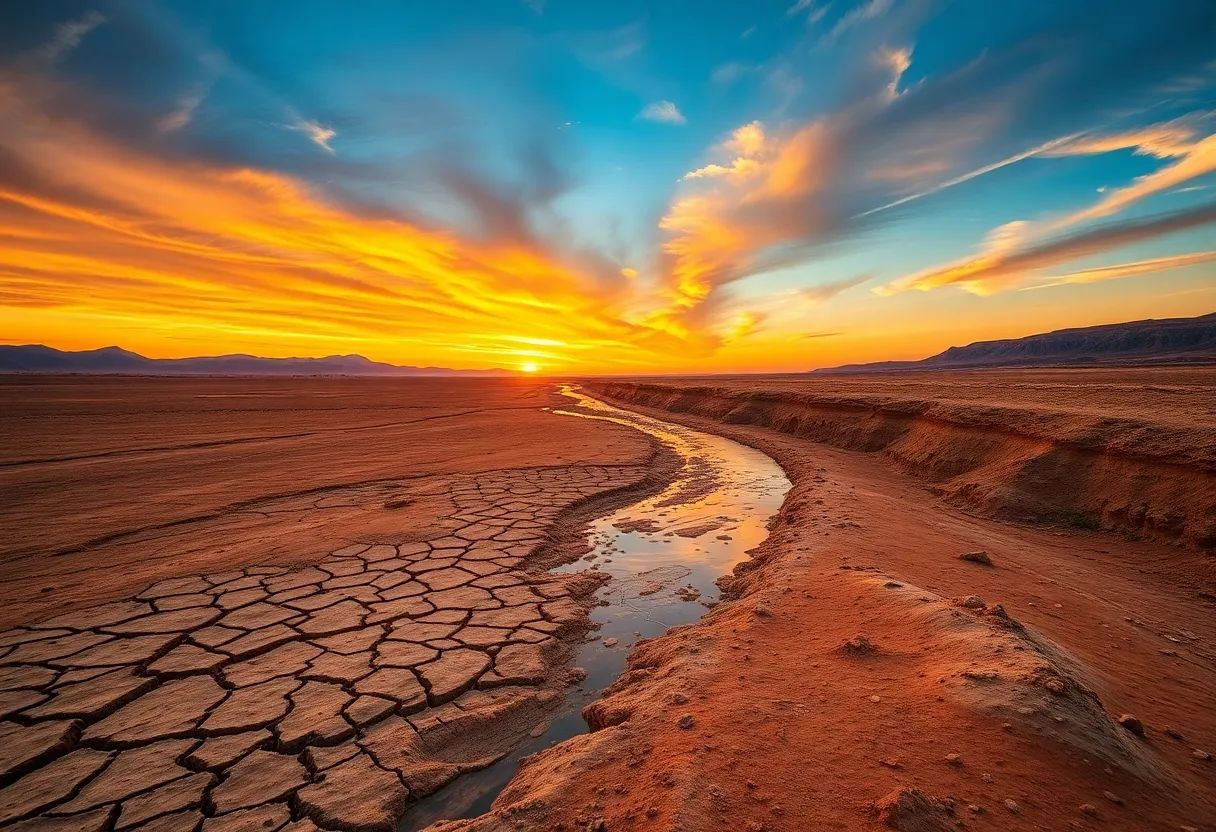News Summary
Arizona will experience an 18% reduction in its Colorado River water allocation by 2026 as ongoing drought conditions continue to challenge water management. This will impact farms and local communities reliant on the river while other states like California remain unaffected due to senior water rights. Efforts to establish new long-term management rules are urgent, especially as reservoir levels drop. Experts warn of dire consequences if current policies remain unchanged, highlighting the necessity for collaborative strategies to ensure water sustainability for over 40 million people.
Arizona will continue to experience substantial water cuts from the Colorado River amid ongoing drought conditions, with an 18% reduction in its allocation set for 2026. This decision is part of a broader strategy that impacts Arizona, Nevada, and Mexico, as persistent drought renders water management increasingly challenging across the basin.
The Colorado River serves as a crucial water source for seven U.S. states, 30 Native American tribes, and two Mexican states, underscoring its importance in the region. As of now, Mexico’s water allocation will see a 5% decrease, while Nevada will maintain a 7% cut, a relatively smaller reduction as it receives much less water than its counterparts.
While Arizona grapples with significant cuts, California will not endure reductions due to its senior water rights, complicating the balance among the states. Federal projections focused on key reservoirs, particularly Lake Powell and Lake Mead, influence these cutbacks, which have been mandated every year since 2022 due to exceptionally low reservoir levels.
The most considerable reductions have occurred in 2023, placing heavy strain on Arizona farmers who rely on the river’s water for irrigation and livelihoods. The Trump administration has established a mid-November deadline for the states to agree on new long-term water management rules. Failure to reach a consensus could lead to federal intervention, raising alarms within local communities about the stability of water supplies.
Historical context reveals that the 1922 Colorado River Compact, which allocated water rights among the states, was established based on a water availability model that is no longer applicable due to climate shifts and prolonged drought. The current crisis is exacerbated by significant evaporation losses and infrastructural issues, complicating water management across the basin.
As water demand continues to exceed supply due to climate change, major users, including agricultural sectors, have been resistant to giving up allocated water. This resistance stems from fears of prolonged dryness in the future, complicating negotiations for sustainable management practices.
Infrastructure like the Hoover Dam requires adequate water levels in Lake Mead to operate effectively and provide electricity, making the current situation critical. In response to these challenges, a “natural flow approach” is being considered, which would manage water distribution based on past average flows to promote sustainability.
Despite ongoing conservation efforts by Lower Basin states that have mitigated deeper water cuts, continuous drought conditions limit viable options. Delays in conservation projects, particularly in Upper Basin states and tribal areas due to previously frozen federal funding, add to the difficulties in crafting effective solutions.
The existing water management guidelines are set to expire in 2026, raising concerns about the long-term planning necessary to meet future water needs across the basin. Projections indicate that by the end of July 2024, Lake Mead could be around 165 feet below full capacity, a startling figure that underscores the severity of the crisis.
Discussions are ongoing among Arizona officials and water users to establish a new framework for sharing future cuts, but the urgency of the water crisis necessitates a swift and effective approach to ensure the sustainability of water sources for over 40 million people reliant on the Colorado River.
Experts caution that unless significant changes are made to current management policies, catastrophic conditions could arise if water flows continue to diminish due to worsening climate effects. The call for a collaborative and proactive approach to water management has never been more critical as the region faces this unprecedented challenge.
Deeper Dive: News & Info About This Topic
- KUTV: Arizona, Nevada, Mexico Get Less Colorado River Water
- Wikipedia: Colorado River
- AZCentral: Colorado River Shortages Continue
- Google Search: Colorado River water management
- Colorado Sun: New Colorado River Report
- Encyclopedia Britannica: Drought
- Salt Lake Tribune: Lake Powell Water Levels Continue
- Google News: Lake Mead projections
- Durango Herald: Water Cuts for Arizona, Nevada, Mexico
- Google Scholar: Colorado River water allocation
- 8 News Now: Water Shortage Tier 1 for Arizona, California, Nevada
- Google Search: water management practices

Author: STAFF HERE PHOENIX WRITER
The PHOENIX STAFF WRITER represents the experienced team at HEREPhoenix.com, your go-to source for actionable local news and information in Phoenix, Maricopa County, and beyond. Specializing in "news you can use," we cover essential topics like product reviews for personal and business needs, local business directories, politics, real estate trends, neighborhood insights, and state news affecting the area—with deep expertise drawn from years of dedicated reporting and strong community input, including local press releases and business updates. We deliver top reporting on high-value events such as the Waste Management Phoenix Open, Cactus League Spring Training, and Arizona State Fair. Our coverage extends to key organizations like the Greater Phoenix Chamber of Commerce and Visit Phoenix, plus leading businesses in technology and healthcare that power the local economy such as Intel and Banner Health. As part of the broader HERE network, including HERETucson.com, we provide comprehensive, credible insights into Arizona's dynamic landscape.





